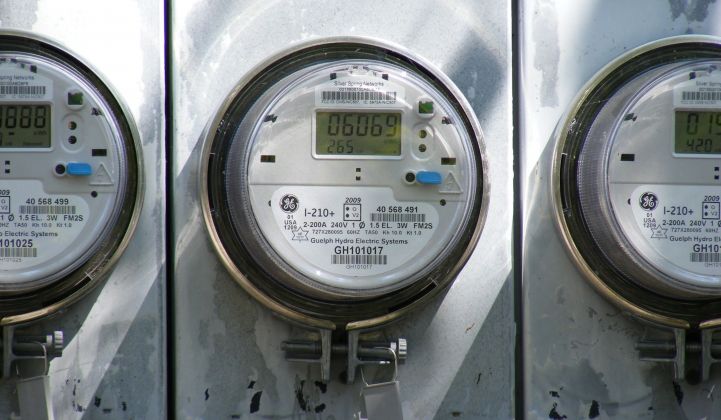The smart meter market has been slow-growing over the past year or so, as GTM Research has been tracking in its quarterly grid edge briefings. And the contracts that have been awarded are going to technologies that can be shared across multiple utilities, using multiple communications pathways.
Take last week’s order for about 6 million smart meters issued by the Netherlands’ four electricity and gas network operators, Liander, Stedin, DELTA Netwerkbedrijf and Westland. This order includes about 3 million meters from Toshiba’s Landis+Gyr, according to an announcement from the Swiss-based company, and another 2.5 million from a consortium of Slovenia-based Iskraemeco and Denmark-based Flonidan.
This is the largest advanced metering infrastructure (AMI) contract since France’s ERDF selected six suppliers for 3 million meters last August. It’s been awhile since we’ve seen some truly massive AMI contracts in Europe, such as Landis+Gyr's deal for up to 16 million smart meters with British Gas in 2013. The Dutch deployment is expected to start next year, and is aimed at meeting a goal of smart metering the entire country by 2021.
The Netherlands is one of Europe’s more competitive energy markets, with retail energy providers vying for customers, and electricity and gas network operators supplying the infrastructure to deliver it. That makes for a somewhat confusing smart meter landscape, one that requires equipment and IT that can be switched from one energy supplier to another when customers change energy retailers, much like the U.K. and Germany.
It makes sense to standardize on technology to make these transitions as smooth as possible, which is what the four Dutch network operators have done with this order. While the initial deployment will use cellular communications, “[t]he contract takes into account possible changing requirements or new technologies in the future,” the network operators announced. Joining forces will also allow the four network operators “to significantly save on the cost per meter.”
Mexico’s national utility, Comisión Federal de Electricidad de México (CFE), is also taking a multi-vendor approach to its initial smart metering rollouts, with Silver Spring Networks and Elster on its roster. Last week, CFE announced it would use Elster meters for two new AMI deployments in the states of Chihuahua, Durango and Coahuila, working with partners Ho1a Innovación and Tecnologias EOS.
Meanwhile, two U.S. AMI giants, General Electric and Sensus, announced last week that they’re combining technologies to reach more territory. GE will integrate Sensus’ FlexNet technology into its I-210+c residential smart meters, allowing them to connect via Sensus’ licensed-spectrum, point-to-multipoint wireless networks.
GE has long incorporated different communications technologies into its smart meters, including Silver Spring Networks, Trilliant and On-Ramp Wireless. The Sensus integration is for U.S. and Canadian markets initially, although the partners are “exploring the opportunity to extend their collaboration to include IEC meters, which are sold globally,” Sensus spokesperson Linda Palmer said in an email.
This mix-and-match approach to smart meter communications is increasingly a part of new AMI deployments, with an eye on supporting faster and more reliable connections between utilities and their customers. GE is in part looking to Sensus’ communications to “quickly identify and restore power outages," Ed Myszka, general manager at GE Digital Energy, noted in last week’s press release.



